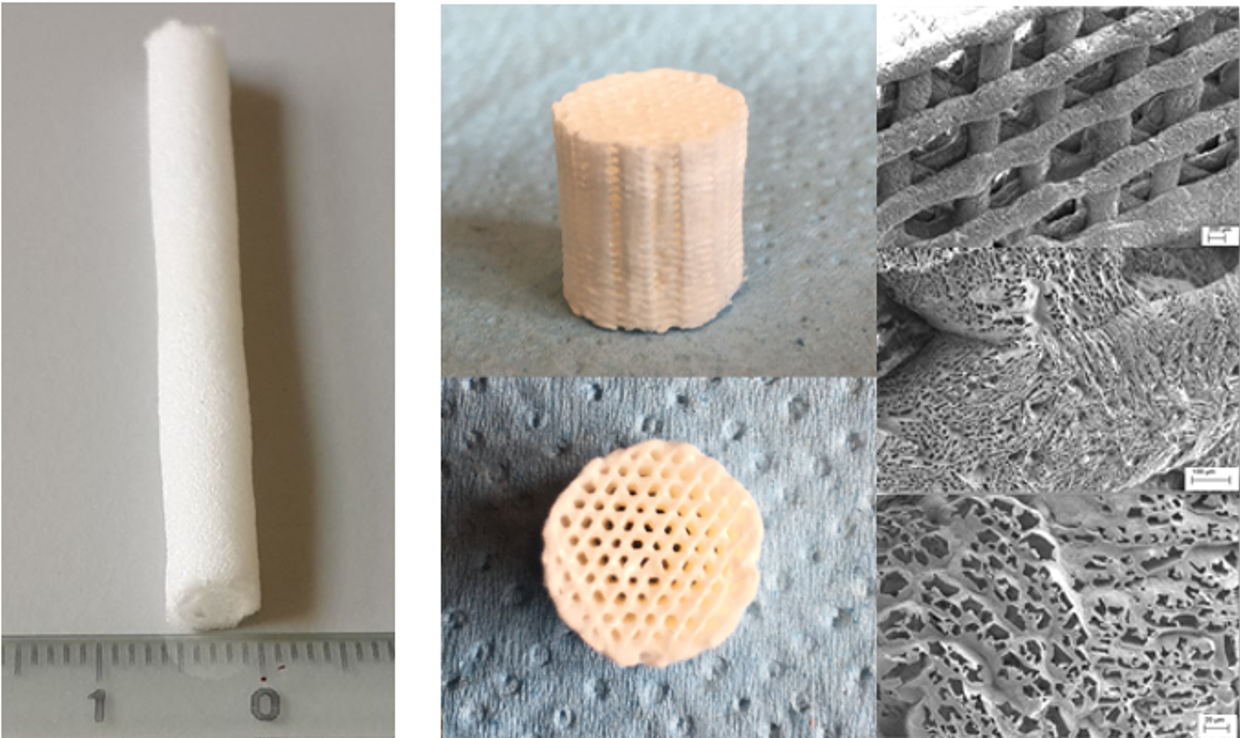3D (bio)printing and fabrication
Scaffolds for tissue engineering applications and membranes for use in organ models are being developed by assistant professor Andreas Poot and professor Dirk Grijpma. These support structures can be based on crosslinked networks of poly(trimethylene carbonate) (PTMC), which are biocompatible, biodegradable and have excellent mechanical properties fitting the intended applications. Tubular porous PTMC scaffolds for arterial tissue engineering can yield vascular grafts after seeding with vascular cells and culturing in a bioreactor
There is not only a lack of suitable biocompatible resins for stereolithography, also the number of biodegradable thermoplastic materials available for additive manufacturing based on extrusion processing is very limited. We are therefore developing novel polymeric materials, such as biodegradable block-copolymers, and their composites for application in tissue engineering and use in implantable medical devices.
Engineered tissues often require a vascular network, either to replicate a physiological tissue response, or to supply the tissue with nutrients after implantation. A correct organization of this network is important for a proper function. The group of associate professor Jeroen Rouwkema is developing 3D bioprinting technology for the generation of vascularized tissues with a defined starting organization. By controlling the properties (mechanical and chemical) of the cellular environment, subsequent tissue remodeling can be controlled to form vascular networks that are organized over different scales, including both large vessels as well as small capillaries.


